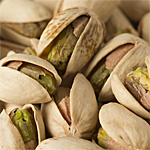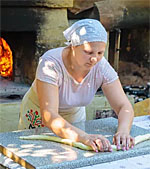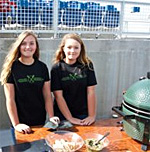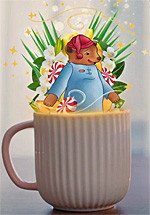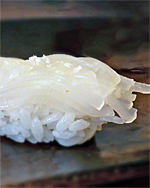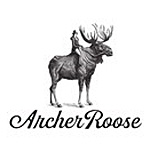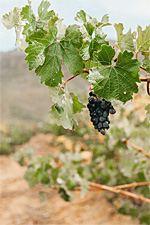How to tell the difference between France’s most iconic cheeses
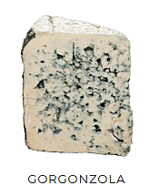 Special to Road Trips for Foodies
Special to Road Trips for Foodies
By Fromage from Europe Marketing Council
Europe produces an astonishing amount and variety of cheeses. Certain estimates place the number of French cheeses in Europe at more than 1,000 – especially if you count those that are only enjoyed in the region they are made. Some well-known French cheeses are instantly identifiable, such as Mimolette, with its distinctive ball-like shape and bright orange interior, or Langres, a petite button with a concave top and a golden wrinkled rind. Others may be more difficult to distinguish based on appearance alone. For example: Is that a Camembert or Brie? A Bleu d’Auvergne or a Roquefort? These tips will help you to tell the difference between cheeses in four Fromage from Europe families.
Soft Cheese: Brie vs. Camembert vs. Coulommiers
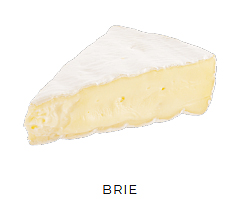 Brie, Camembert and Coulommiers are all soft-ripened, cow’s milk cheeses aged for about four weeks. Brie (right) is shaped into large wheels, Camembert in small wheels, and the size of Coulommiers is in between the two. Brie and Coulommiers are close cousins in flavor—buttery and mellow, with just a hint of earthiness—but Coulommiers thicker paste gives it an even more luxurious mouthfeel. Camembert is rich and mushroomy, flavors that intensify as the cheese matures.
Brie, Camembert and Coulommiers are all soft-ripened, cow’s milk cheeses aged for about four weeks. Brie (right) is shaped into large wheels, Camembert in small wheels, and the size of Coulommiers is in between the two. Brie and Coulommiers are close cousins in flavor—buttery and mellow, with just a hint of earthiness—but Coulommiers thicker paste gives it an even more luxurious mouthfeel. Camembert is rich and mushroomy, flavors that intensify as the cheese matures.
Hard Cheese: Comté vs. Emmental
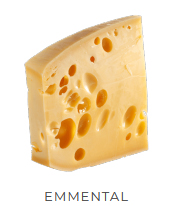 Comté and Emmental (left) are both Alpine-style, cow’s milk cheeses made in mountainous regions of France bordering Switzerland. If whole wheels of these cheeses were placed side by side, it might be hard to tell them apart, yet inside their appearance is markedly different—Comté has tiny holes, or eyes, while Emmental’s eyes are quite large. Flavor-wise, Comté is mild but complex, with notes of hazelnuts, butter, and cream. Emmental is nutty and slightly sweet.
Comté and Emmental (left) are both Alpine-style, cow’s milk cheeses made in mountainous regions of France bordering Switzerland. If whole wheels of these cheeses were placed side by side, it might be hard to tell them apart, yet inside their appearance is markedly different—Comté has tiny holes, or eyes, while Emmental’s eyes are quite large. Flavor-wise, Comté is mild but complex, with notes of hazelnuts, butter, and cream. Emmental is nutty and slightly sweet.
Blue Cheese: Fourme d’Ambert vs. Bleu d’Auvergne vs. Roquefort
What this trio has in common are blue veins from the injection of Penicillium Roqueforti; beyond that they are quite different. Made for 1,000 years, Fourme d’Ambert is molded in a tall cylindrical shape. It’s cut into discs, while the more traditional wheels of Bleu d’Auvergne and Roquefort are cut into wedges. Fourme d’Ambert is the mildest of the three, delicate and fruity. Bleu d’Auvergne has an intense aroma and a spicy, salty flavor. Roquefort—a favorite of Emperor Charlemagne—is rich zesty, and complex.
Ash-coated goat cheese: Selles-sur-Cher vs. Valençay
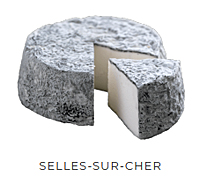 Say “goat cheese” to most people and fresh chèvre is what comes to mind, but French goat cheeses cover a broad spectrum of age, shape, and flavor. The rinds of Selles-sur-Cher (right) and Valençay are both covered in ash, a technique that creates a more hospitable surface for beneficial mold to bloom. The disc-shaped Selles-sur-Cher has a dense texture and a robust, tangy taste. Valençay, molded into a squat pyramid shape, boasts a distinctive wrinkly rind and a mild, creamy flavor with hints of lemon.
Say “goat cheese” to most people and fresh chèvre is what comes to mind, but French goat cheeses cover a broad spectrum of age, shape, and flavor. The rinds of Selles-sur-Cher (right) and Valençay are both covered in ash, a technique that creates a more hospitable surface for beneficial mold to bloom. The disc-shaped Selles-sur-Cher has a dense texture and a robust, tangy taste. Valençay, molded into a squat pyramid shape, boasts a distinctive wrinkly rind and a mild, creamy flavor with hints of lemon.
Whether soft or hard, rich or fresh, Fromage from Europe have a little something for everyone. Although some may appear similar, in daring to explore the many flavors of French cheese, you’ll be able to distinguish each uniquely delicious quality in no time.
About Fromage From Europe
The Fromage from Europe Marketing Council is composed of French dairy farmers and cheese firms. It is led by The French Dairy Inter-Branch Organization (CNIEL) and by The French Goat Milk Producers and Processors Association (ANICAP). The Council’s mission is to create awareness about the variety of European and French cheese available on the US market and the multiple ways that American consumers can incorporate them into their diets, their recipes and their lifestyles.
The council develops national and regional programs to build awareness and demand for European and French cheese throughout the United States and the world. Their goal is to create an appealing impression of imported Fromage from Europe that sets them apart as a unique group and strengthens their competitive position in the growing specialty cheese category.
(Photos courtesy of Fromage From Europe)


